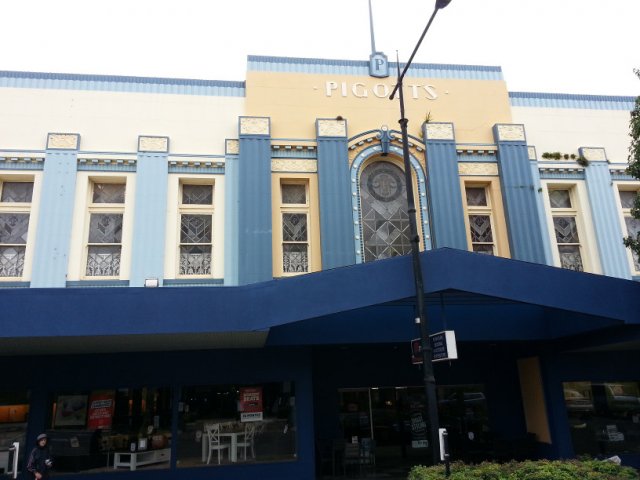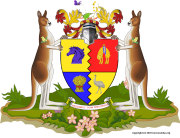
In the heart of Toowoomba, Queensland's Garden City, stands an architectural gem that whispers tales of ambition, resilience, and community spirit. The Pigott's Building at 381-391 Ruthven Street, with its elegant Art Deco facade, has long been more than just bricks and mortar—it's a symbol of the region's retail evolution. From humble drapery beginnings in the late 19th century to its status as a bustling department store empire, Pigott's wove itself into the fabric of local life for nearly a century. This article traces its journey, drawing on historical records to illuminate the store's rise, trials, and transformation.
Humble Origins: An Irish Dream Takes Root
The story of Pigott's begins not in Toowoomba, but across the seas in Ireland. Michael Daniel Pigott, born around 1850 in Tuam, County Galway, was a skilled draper who emigrated to Australia in 1884. Settling first in Brisbane, he launched his venture on Ipswich Road in Woolloongabba before partnering with Thomas Charles Beirne to open Pigott and Beirne in South Brisbane's Stanley Street in 1886—a collaboration that lasted until 1891.
Undeterred, Pigott set his sights northward. On July 6, 1896, he unveiled his first Toowoomba outpost next to the Criterion Hotel on Russell Street, promising "the most marvellous bargains ever offered in Toowoomba." The timing was impeccable; the Darling Downs region was booming, and Pigott's focus on quality drapery—fabrics, clothing, and household goods—quickly resonated. Just over a year later, on August 24, 1897, the business relocated to purpose-remodeled premises on Ruthven Street, a prime spot that would anchor its future.
Family played a pivotal role from the start. Michael's sons—John Patrick (born 1882), Vincent George (born 1883), and Francis Joseph (born 1885)—joined the fold, learning the trade and expanding operations. By the late 1890s, branches sprouted in nearby towns like Pittsworth, Clifton, Boonah, Beaudesert, Chinchilla, Dalby, and Warwick, turning Pigott & Co. into a regional powerhouse.
Flames and Rebirth: The 1909 Fire and Grand Reopening
Prosperity wasn't without peril. In 1908, the Ruthven Street store underwent a major remodel, featuring grand vestibule windows to draw in shoppers. But on July 8, 1909, disaster struck: a devastating fire razed the building and its inventory to the ground. Remarkably, Pigott's spirit endured. The very next day, temporary quarters were established, and within weeks, surging customer demand forced an expansion of those makeshift spaces.
From the ashes rose a phoenix. On April 18, 1910, the new Pigott's Building opened its doors—twice the size of its predecessor, with enlarged departments and innovative touches like a mail-order service that covered postage to any Queensland railway station. Designed by local architects James Marks and Son, the two-story brick structure blended functionality with flair, setting the stage for decades of growth. That same year, Pigott & Co. incorporated as a limited company, with Michael D. Pigott at the helm as managing director—a title he held until his death on May 11, 1929.
The Golden Era: Prosperity and Community Heart
Under Michael's stewardship, Pigott's blossomed into Toowoomba's retail crown jewel. By 1920, its mail-order catalog rivaled the nation's best, delivering "careful and speedy" goods across the colony. Staff loyalty was legendary; Michael, affectionately known as "M.D.," fostered a family-like atmosphere with perks like annual balls, picnics, cricket teams, subsidized insurance, and even a pioneering superannuation scheme. Many employees spent lifetimes there, while M.D.'s generosity extended outward—in 1898, he quietly gifted unsold Christmas toys to underprivileged families.
The 1930s and 1950s marked Pigott's zenith. After M.D.'s passing, his son Francis Joseph—fresh from service in the Army Medical Corps during World War I—stepped up as managing director. F.J. navigated the Great Depression and post-war boom, overseeing expansions in 1914, 1935, and a massive four-story rear addition in 1956. By mid-century, Pigott's was the city's largest store, employing hundreds and serving as a social hub.
The 1960s brought modernization: adjacent properties on Margaret Street were acquired, cash registers and escalators installed, and a food hall with coffee lounge launched to rival competitors like Myer's. Yet, amid the glamour, Pigott's remained rooted in community. Family member Michael Pigott championed St. Vincent's Hospital's founding in the 1920s, securing vital funding through his finance committee role.
Decline and Transition: The End of an Era
By the 1980s, shifting retail landscapes—big-box chains and suburban malls—challenged the downtown model. On July 28, 1983, after 87 years, Pigott & Co. was acquired by Brisbane's McDonnell and East, which rebranded the store and operated it until vacating in 1990. The building itself sold in 1988, later housing Super A-Mart, a discount furniture outlet, as of 2013.
Francis Joseph's son, James Francis Pigott (born 1921), retired as joint managing director in 1983, closing a multi-generational chapter. The Pigott family, buried at Drayton Cemetery—Michael and his wife Mary Josephine in 1924 and 1929—left an indelible mark.
A Heritage Revived: Looking to the Future
Recognizing its cultural weight, the Queensland government listed Pigott's Building on the Heritage Register on October 21, 1992, preserving its Art Deco charm and historical footprint. In January 2024, the local Rowe family snapped it up, vowing over $1 million in upgrades. By June 2025, plans crystallized for a multi-tenancy precinct—think boutique shops, cafes, and offices—breathing new life into the CBD landmark while honoring its past.
Today, as Toowoomba eyes sustainable growth, Pigott's stands as a testament to entrepreneurial grit. From an Irish draper's vision to a regional icon, its history mirrors the Darling Downs' own: resilient, generous, and ever-evolving. Whether you're a history buff or a casual stroller on Ruthven Street, pause at those grand windows—they hold stories worth retelling.
It was added to the Queensland Heritage Register on 21 October 1992.




